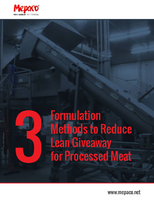Tire Rim Slip Performance Test Standard approved by ASTM.
Press Release Summary:
ASTM F2803, Test Method for Evaluating Rim Slip Performance of Tires and Wheels, was developed by Subcommittee F09.20 on Vehicular Testing. Useful to tire and wheel manufacturers, this standard will aid in determining what effect different tire designs, wheel designs, or inflation pressures have on amount of rim slip experienced. Standard is based on rim slip performance test for tires that had been done at Nevada Automotive Test Center for over 20 years.
Original Press Release:
ASTM Committee on Tires Approves Rim Slip Performance Test Standard
W. CONSHOHOCKEN, Pa.-A rim slip performance test for tires that has been done at the Nevada Automotive Test Center for more than 20 years has now become an ASTM International standard. ASTM F2803, Test Method for Evaluating Rim Slip Performance of Tires and Wheels, was developed by Subcommittee F09.20 on Vehicular Testing, part of ASTM International Committee F09 on Tires.
Rim slip occurs when tire and wheel combinations are subjected to high torque inputs, with excessive rim slip happening when tire and wheel interface is less than optimal. Reasons for rim slip include: tire inside diameter variance; rim seat not up to specifications; rim polished or painted; and use of improper lubricant during mounting of tire.
According to Jason Whiteley, automotive/tire test engineer, Nevada Automotive Test Center, and an F09 member, rim slip can cause improper bead seating, bead damage or additional polishing of the inside rim flange, any of which can lead to air loss over time, rapid air loss or tire blowout.
"Rim slip can increase as a result of low inflation pressure, such as during operations on mud, sand or snow when a higher amount of contact area with the surface is preferred," says Whiteley. "Rim slip may also increase as a result of high torque demand such as during hill climbing or high performance driving."
Whiteley says that ASTM F2803 will be helpful to tire and wheel manufacturers to determine what effect different tire designs, wheel designs or inflation pressures have on the amount of rim slip experienced.
To purchase ASTM standards, visit www.astm.org and search by the standard designation number, or contact ASTM Customer Relations (phone: 610-832-9585; service@astm.org). ASTM International welcomes and encourages participation in the development of its standards. For more information on becoming an ASTM member, visit www.astm.org/JOIN.
ASTM International is one of the largest international standards development and delivery systems in the world. ASTM International meets the World Trade Organization (WTO) principles for the development of international standards: coherence, consensus, development dimension, effectiveness, impartiality, openness, relevance and transparency. ASTM standards are accepted and used in research and development, product testing, quality systems and commercial transactions.
View this release on the ASTM Web site at www.astmnewsroom.org.
ASTM Committee F09 Next Meeting: April 21-22, April committee week, St. Louis, Mo.
Technical Contact: Jason Whiteley, Nevada Automotive Test Center, Silver Springs, Nev., Phone: 775-629-2000, jwhiteley@natc-ht.com




